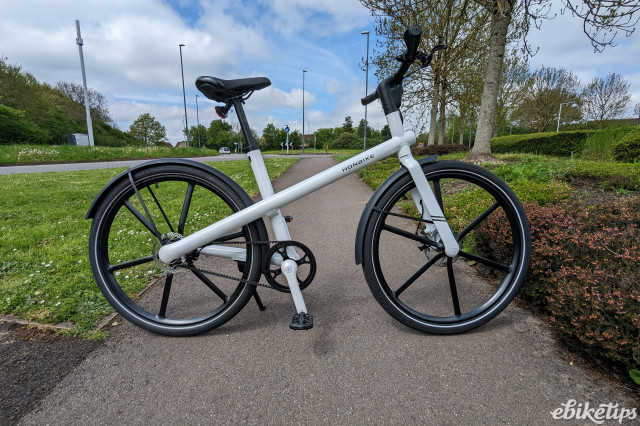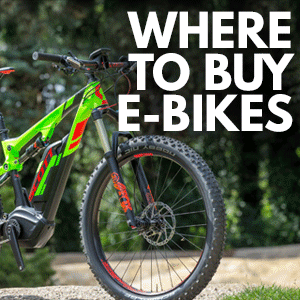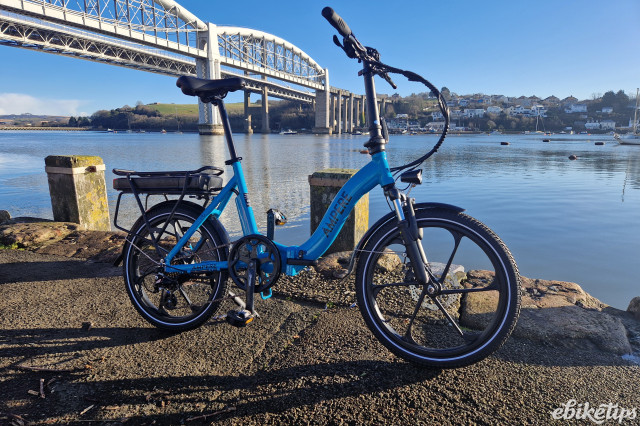It really couldn't be easier to buy and use an e-bike. As even those only vaguely acquainted with them know, they can be treated just like regular bikes. But there is a perception - and in some cases a reality - that other kinds of light electric vehicle are trickier to ride legally on the road.
However, with petrol and car prices soaring it might just be worth looking at the other light electric options beyond regular e-bikes.
Why are there so many e-bikes but so few light electric vehicles? (Or, Type Approval - boring but important)
Many people have commented over the years that e-bikes have a very privileged legal position. They are essentially treated as bikes without a motor as long as their motor is rated at 250W or less and assists you whilst pedaling, with the further stipulation that the max speed the motor can assist to is 15.5mph. As long as these conditions are met, and the manufacturer says it has complied with a prescribed set of e-bike standards, anyone over 14 years old can ride on one on UK roads and cycle paths.
In performance terms, there is a yawning gap between e-bikes and cars (electric or otherwise). Typically e-bikes weigh around 20kg and are capable of peak motor output of around 1 horsepower (1HP = 746 watts - the 250W legal rating applies to continuous motor output, not peak output which is not set down in law). Most small cars weigh well in excess of 1000kg and can generate hundreds of times the power of an e-bike. The average weight and power of vehicles on the road will of course be much higher than this.
However, the electric drive technology for smaller, lighter, cheaper, more energy efficient electric vehicles is already here given the strides battery and motor technology have made over the last couple of decades.
There are a number of factors that stop light electric vehicles (LEVs) and personal electric vehicles (PEVs) like e-scooters from becoming more popular, but in many cases the presence of a legal black hole where clear legislation should be is a major deterrent. There are many examples where current law tries to force the round peg of innovative electric vehicles into the square hole of legislation, structured around heavy, expensive motor vehicles. It's not all doom and gloom as we see in the next section - but there are clearly changes the government could make (although that's a topic for another time).
Current light electric vehicle law is based around European law's 'L' category vehicles. This is a veritable definition soup, mixing such factors as vehicle weight, number of wheels, number of seats, speed limits, motor power limits... and so on and so on. Critically, all these vehicle categories require type approval from the relevant UK government department - unlike bikes and e-bikes. Some vehicles like speed pedelecs can, at a push, be made to fit into these categories and can be ridden on UK roads, whilst others, like e-scooters, currently cannot.
So what light electric vehicles can you legally ride in the UK right now?
1. Throttle-only e-bikes/electric low-powered mopeds
Legal e-bikes require pedals to be turned for the motor to provide assistance, so in general terms throttle-only e-bikes or 'twist and gos' are not accommodated by current e-bike law. However, they can be type approved.
Throttle only e-bikes (i.e. ones where the pedals don't have to be turning for the motor to work) have some clear advantages over pedelecs, such as if a person has health problems that make it difficult to pedal or wants to take heavy loads on an e-bike where a pedal start on a hill can be difficult to balance. They are also effective and nippy in busy town traffic.
David Miall from Wisper Electric Bicycles successfully lobbied for throttle-only machines to be allowed on UK roads - and that means they can be ridden much like regular e-bikes with no helmet; no registration and plate; and no tax or insurance. They can also be ridden in cycle lanes and on bridleways.
Anyone can apply for the Type Approval certificate by filling in an online application and paying a fee of £55.00. They must then take the bike to a designated MOT centre for testing and approval. Wisper offer this service for £199, including VAT. The service (and fee) can be applied to any of their 806, 705 and 905 lines of e-bikes.
Technically these machines are not e-bikes but 250W LPMs (low powered mopeds). You would assume all machines classified as mopeds need a helmet to be worn, registration plate, insurance etc, but this little-known category means that is not so and you can ride them just like e-bikes.
Prices of Wisper bikes start at £1,499 before the addition of the throttle-only approval fee.
2. 15.5mph three- and four-wheelers and multi-seat vehicles
There's nothing to stop you adding as many extra wheels as you want to an e-bike as long as it conforms to e-bike law in other respects (250W rated motor, 15.5mph assist limit etc). Standard electric tricycles like Jorvik and recumbent trikes from the likes of ICE are treated as regular e-bikes, while the incredible Urban Arrow Tender, above, has an amazing three wheel carrying capacity but is still, legally speaking, an e-bike.
Passenger seats can also be added under current e-bike law - ebiketips has reviewed e-cargo bikes from the likes of Mycle and Tern and loved the ability to have a pillion rider, amongst many other functions.
There is nothing to stop a manufacturer coming up with a fully enclosed three- or four-wheeler with car-like steering. As long as the legally compliant e-bike pedal drive remains, the vehicle will be allowed anywhere a non-e-bike is with no red tape. Many have already gone down this road, but the real world often seems to intervene when it comes to manufacturing costs and simple practicality. You tend to end up with a weighty, expensive vehicle that is limited to 15.5mph and constrained in performance by its 250W motor.
The likes of Drycycle and Bio-Hybrid have come and gone whilst Frikar's Podbike and the City Q seem perpetually stuck in pre-order mode with shipping forever just around the corner. Seemingly succeeding where others have failed are Oxfordshire's EAV - though they tend to aim for larger orders from businesses.
3. Speed pedelecs (although getting insurance can be a challenge...)
With a speed pedelec, or S-pedelec, you still need to pedal, but you can reach electric-assisted speeds of up to 28mph. Again, it's all about getting the vehicle registered, but the red tape involved can be tricky - as ebiketips found out - and there are more restrictions on riding them compared to regular 15.5mph e-bikes.
Speed pedelecs are a sub-classification of mopeds, so they cannot travel on bike lanes and paths (if you need to know, the sub-classification is L1e-B, for motors up to 4Kw and speeds up to 28mph - note three and four wheelers are allowed in this class, but only those with 'twinned' wheels on the same axle that are less than 460mm apart).
We asked Markus Riese, founder and CEO of Riese & Müller (whose company does speed versions of many of their e-bikes - including the incredible full-sus e-cargo Load range pictured above) to highlight how they could transform travel.
Markus said that speed pedelecs, "have enormous potential to make environmentally friendly mobility attractive and replace cars - especially for long distance commuters."
"They bridge the gap between pedelecs (25 km/h e-bikes) that are already very popular for distances of 1-10km, and cars that are used for longer distances over 30km. In Germany, the average commuting distance is 18km which is the perfect use case for a speed pedelec."
Clearly the same argument applies to UK conditions.
The red tape is all detailed in our previous article on the subject. It's likely to involve a fair bit of your own time and costs are likely to be a few hundred pounds on top of the cost of the bike. From ebiketips' own research, it looks as if the DVLA stages should be relatively straightforward if all your paperwork is in order. However, ringing around insurers willing to insure a speed pedelec drew a blank, with some insurance companies like Bikesure, who had previously said they insured speed pedelecs, refusing to do so, and a number of bike shops who sell speed pedelecs stating they know of no-one who is willing to sell insurance for them.
If you are able to find a way to get insurance then speed pedelec prices are likely to range from around £4,000 to well over £10,000. As well as Riese & Muller, other S-pedelec manufacturers include Stromer and QWIC.
4. E-scooters
Privately owned e-scooters can only be ridden on private land but an exemption applies to public hire schemes sanctioned by the government on an individual basis. These rental schemes, which are being run by a number of operators in towns and cities up and down the UK, are the only way you can legally ride an e-scooter in public.
E-scooters are set to be legalised, but the necessary legislation has repeatedly been pushed back. See here for our full article on the subject of e-scooter legality.
5. 28mph e-mopeds
28mph e-mopeds fall broadly under the same category as 50cc petrol mopeds.
Technically they are classed as L1e-B vehicles just like speed pedelecs. However, the fact that they lack pedals means they are more widely accepted as insurable by the insurance industry.
They can be ridden by any rider 16 or over who has either passed compulsory basic training (CBT) or has category AM or P on their existing driver licence.
Popular makes are NIU, Govecs and Super Soco. The pricing range for new bikes is broadly from £2,500 to £4,000.
6. Faster e-mopeds and electric motorbikes
There are, of course, plenty of electric mopeds and motorbikes that are capable of speeds in excess of 28mph (technically L3e-A1). There is no speed restriction, but motor power is capped at 11kW with a max power:weight ratio also specified.
Road riders must be 17 or above and with a motorcycle licence. Fuller details here.
As with 28mph mopeds popular makes are NIU, Govecs and Super Soco.
7. Microcars (legally termed quadricycles)
A rather under-the-radar category, quadricycles are best thought of as low speed electric microcars. Speed is limited to 28mph and motor power to between 4 and 6kW, depending on the design. The vehicle weight limit is 350kg, not including batteries.
They offer the possibility of relatively low cost, car style transport to 16 year olds who have passed CBT as well as to urbanites who don't need greater speed but value the comfort and weather protection.
Models include the Citroen Ami, Renault Twizy and - aimed rather more at businesses - the Paxster Cargo. As with moped categories, registration and insurance are necessary but there appear to be firms out there ready to help, here and here for example. Prices for electric micro-cars seem to be grouping either side of the £10,000 mark.
There is also a class labelled heavy quadri-mobile (L7e-C) with a maximum motor power of 15 kW and maximum design speed of 56mph with an enclosed passenger compartment mandatory and a max weight of 600kg. We're unaware of any vehicle in this category actually on sale in the UK - perhaps surprising as it looks like an important missing link in the developing evolutionary tree of light electric vehicles.


















